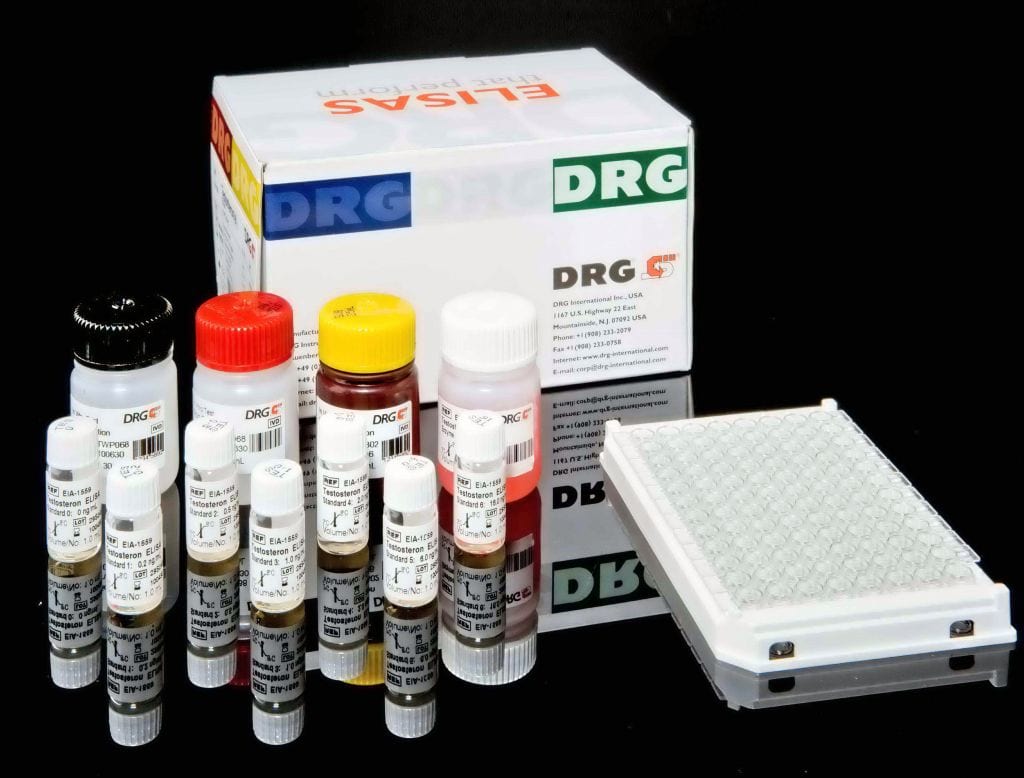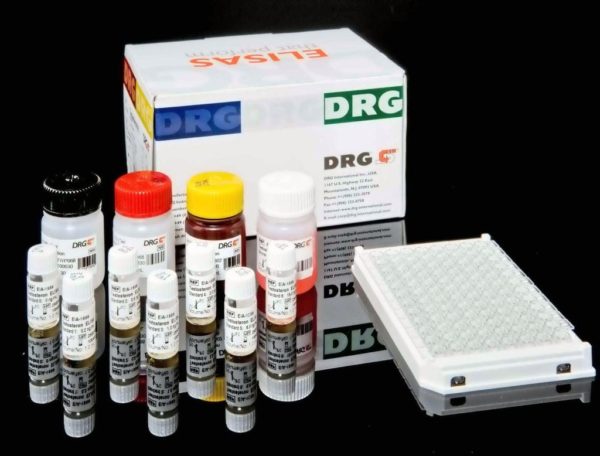Description
An enzyme immunoassay for the qualitative and semiquantitative determination of IgM-class antibodies to Treponema pallidum in serum and plasma.
Spirochetes are motile bacteria with a periplasmatic axial filament. All pathogenic species belong to the family Treponemataceae, which includes the three genera: Treponema, Borrelia, and Leptospira. The Treponema are motile bacteria, 5-15µ in length and 0.2µ in width, containing about 10 flexible, undulating, spiral shaped rods. Treponema pallidum, the causative agent of Syphilis, is transmitted by direct contact, usually through sexual intercourse. Syphilis along with Gonorrhoea, Chancroid and Lymphogranuloma venereum, designated as a venereal disease, or VD, is an acute and chronic infectious disease. After an incubation period of 12-30 days, the first symptoms to appear are chancres, soon followed by syphilitic ulcers which then spontaneously disappear in a few weeks. During this first stage (primary syphilis) the Treponema pallidum propagates in related lymph nodes to be distributed to the whole body stream. Three further stages of disease follow which are classified as secondary, tertiary, and quaternary syphilis. Treatment with
antibiotics at the earliest disease stage and prophylactic measures are ways to prevent epidemics. For this purpose, antenatal and donor blood screenings are mandatory in most of countries around the world.
The DRG Treponema pallidum IgM ELISA Kit is a solid phase enzyme-linked immunosorbent assay (ELISA) Patient samples are diluted with Sample Diluent and additionally
incubated with IgG-RF-Sorbent, containing hyper-immune anti-human IgG-class antibody to eliminate competitive inhibition from specific IgG and to remove rheumatoid factors. This pretreatment avoids false negative or false positive results. Microtiter wells as a solid phase are coated with Treponema pallidum antigen. Pretreated patient specimens and ready-for-use controls are pipetted into these wells. During incubation Treponema pallidum-specific antibodies of positive specimens and controls are bound to the immobilized antigens. After a washing step to remove unbound sample and control material horseradish peroxidase conjugated anti-human IgM antibodies are dispensed into the wells. During a second incubation this anti_IgM conjugate binds specifically to IgM antibodies resulting in the formation of enzyme-linked immune complexes. After a second washing step to remove unbound conjugate the immune complexes formed (in case of positive results) are detected by incubation with TMB substrate and development of a blue color. The blue color turns into yellow by stopping the enzymatic indicator reaction with sulfuric acid. The intensity of this color is directly proportional to the amount of Treponema pallidum-specific IgM antibody in the patient specimen. Absorbance at 450 nm is read using an ELISA microtiter plate reader.




